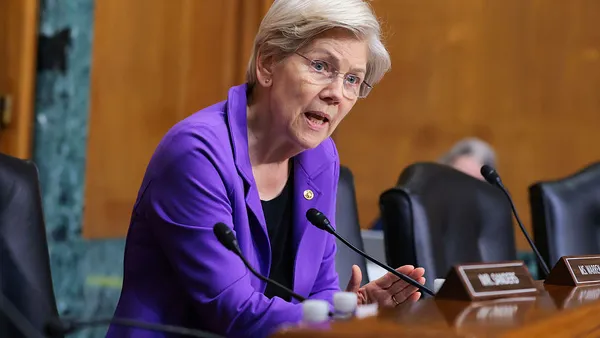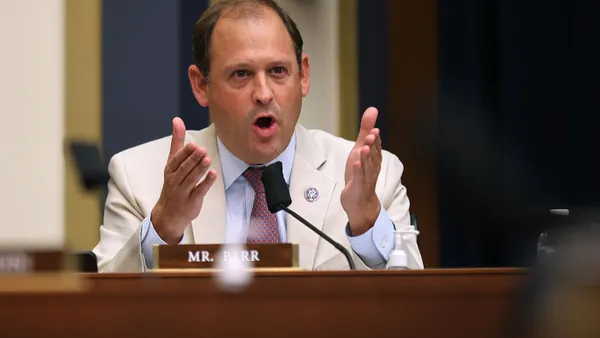Amid heightened regulatory scrutiny around bank-fintech partnerships and a series of recent enforcement actions, regulators are now arguing for more guidance on how these tie-ups are run.
Speaking Wednesday at a conference hosted by Semafor in Washington, D.C., Jonathan McKernan, a Federal Deposit Insurance Corp. board member, said there is room for activity-specific advice under existing interagency guidance on third-party relationships.
Guidance could articulate “with greater clarity, even some black-and-white rules of the road,” he said. Banks need to continually monitor to ensure partner fintechs are fulfilling obligations, and identify gaps, said McKernan, who noted that this often doesn’t happen.
He did not comment on the fallout from the Synapse bankruptcy case — in which more than 100,000 customers have been locked out of accounts with partner banks amid disputes over the users’ balances — noting that fact development in the case is still early.
McKernan echoed comments earlier Wednesday from Consumer Financial Protection Bureau Director Rohit Chopra on the challenges in bank-fintech partnership governance.
“Many banks are marketing themselves as the bank of choice for fintechs, and sometimes that leads to situations where there is a kind of ‘move fast and break things’ mentality, or things aren't really buttoned up,” Chopra said. “In some circumstances, that's OK. In other circumstances like the Evolve [Bank]-Synapse fiasco, it's just catastrophic.”
Another area of concern for bank-fintech partnerships, McKernan said, is improper use of the FDIC logo in fintech advertising. The agency finalized a new rule in December governing use of the official FDIC signs and advertising statements. It clarified the agency’s regulations on false advertising, misrepresentations of deposit insurance coverage and misuse of the FDIC’s name or logo.
“I don't want this issue to unduly impede innovation or help entrench the incumbents, but some have taken advantage of the deposit insurance issues, the logo, in ways that have created some customer confusion to their detriment,” he said, noting that he hopes the agency is “vigorously enforcing” the rules.
FDIC as an innovation champion
McKernan argued that the FDIC can position itself as a promoter of innovation in financial services, with regulation that doesn’t further entrench incumbents into their positions.
“There’s certainly a lot of potential for innovation to help reduce barriers to entry,” he said.
Some of the largest financial institutions have a dominant market position tied to legacy payment and other systems that are ripe for “creative disruption,” he noted.
A path forward on FDIC’s culture issues
With Acting Comptroller of the Currency Michael Hsu, McKernan led a panel that oversaw an investigation into allegations of sexual harassment and other interpersonal misconduct at the FDIC. He called the path forward challenging, with a change at the top needed to credibly implement changes.
“If we don't do that, I think it really will challenge our ability to execute on the safety and soundness, consumer protection [and] financial stability mission,” he said. “Our Inspector General has flagged human resource issues, and particularly retention, as one of our biggest strategic risks. These issues are going to compound if we don't fix our very real and very serious, shocking cultural issues.”














